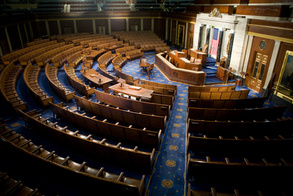
Mainly I’m talking about the 2022 election…which is more than 6 years away.
We’re not even done with 2016 and it’s a helluva year.
So…how can I have any idea what’s going to happen in the off-year 2018 contest, the presidential election of 2020, and all the local races in between?
I can’t, and I don’t.
I can’t have an idea because it’s the future, and I don’t have an idea because so much hinges on this momentous year.
But live through it we will, and the ones that come after.
So what’s so special about 2022?
Well, to my way of thinking that’ll be the first year that we have two U.S. House seats again.
Will the state be divided into eastern and western districts once more, and if so…what side of the state will our current district be on?
It’s a very important thing, and for many important people.
For instance, if…well, there we go again – if.
Who’s to say if Zinke wins. Winning is never a certainty.
Back in the ’92 election it was Pat Williams going against Ron Marlenee. Both men were popular and had been serving since the late-70s.
Marlenee was someone with “strong opinions, but he his not much when it comes to building coalitions to promote them.” Williams’ “strong ties to organized labor helped bring him to Congress and help keep him there,’” a key part of that being his “high AFL-CIO vote rating.”
Alas, by ’92 the district had to be combined as the 1990 Census told us we’d lost population, falling below a million residents.
We’d had that second seat since 1912 and it was a harsh blow. So it was that momentous election year when a battle of east vs. west rose up in the state.
In the end Pat Williams took it 52% to 48%. His win that year over Ron Marlenee proved “mostly that western Montana added a few people and eastern Montana lost a lot,” according to historian David Emmons.
Montana’s House seats can be tenuous positions. Pacific Theatre pilot Orvin Fjare found that out in 1956 when he lost to LeRoy Anderson, ending his single term.
Anderson himself declined to run for a third term in the seat, instead opting to hop to James Murray’s open U.S. Senate seat in 1960. He probably wished he hadn’t, coming in third in the four-man primary.
The 30s and 40s were turbulent times for both seats, with many characters coming and going.
In 1932 Joe Monaghan and Roy Ayers – Democrats both – got elected and served two terms. Monaghan lasted until 1936 when he tried to challenge Senator Murray and lost. Ayers went until ’36 as well, though dropped out to run for governor.
In 1936 Jerry O’Connell got a term and then in ’38 Jacob Thorkelson got one, then in ’40 Jeanette Rankin got one.
There are of course long stretches too. James O’Connor went nearly a decade in the 40s. Mike Mansfield did 8 years in the 50s. Arnold Olsen served the entirety of the 60s. Reheberg was in for more than a decade in the 2000s.
But back to combining the seats.
That worked for Democrats in 1992 but by 1996 things had changed and the old eastern district influences were more powerful than those in the old western district.
Republicans took the sole U.S. House seat for Montana and have kept it for the past 20 years.
Guess eastern Montana still had a few people after all.
So what might happen in the future?
Currently Zinke is doing well in the seat, at least with support. He’ll likely win in 2016 and then he could choose to run again in 2018 or he could try to go for Senator Tester’s U.S. Senate seat.
Ah, the jump, and all the perils it entails.
Someone in the GOP will have to step up and challenge Tester. My money is on Zinke…unless Gianforte loses the governor’s race this year.
Gianforte is the strongest player in the Montana GOP simply because he has the most money and thus the most pull.
What he says happens, at least as far as the rank and file is concerned. His was a swift and bloodless coup, as those involving money and its clout often are.
So it could be Gianforte challenging Tester in 2018 and he’ll take everything he learned in his 2016 statewide race and use it to good effect, repeating few of the mistakes.
But does Gianforte want to live in Washington for 6 or 8 months of the year or whatever those jokers ‘work?”
I don’t think so, which means Zinke will challenge Tester.
And if not Zinke…who?
Who are the top dogs on the Republican bench that could mount a challenge?
I suspect the primary that year will be stuffed with people like Corey Stapleton, Matt Rosendale, Jeff Essman, maybe even Art Wittich or Jennifer Fielder or Elsie Arntzen.
Notice that many of these names are running currently. That’s about as far as the Montana GOP bench extends.
Oh, there are some outliers, people like Daniel Zolnikov and Keith Regier and Terry Gauthier but no one outside their areas knows them.
But primaries are learning processes and name-making events for the people that can scrape together the dough for the filing fee and the money needed for the massive amount of printing and mailing that comes afterward (and often before).
That creates name recognition simply for the fact that the newspapers and TV news anchors have to say your name for several months until the primary.
So that’s how you get a spot on the GOP bench.
How about the Montana Democrats’ bench?
It’s pretty empty. Even this year we see that Melissa Romano – a complete unknown – is running for a statewide position.
No one knew who she was in early-2015 when she announced, and many thought Amanda Curtis would go for OPI head.
That’s another one on the Dem bench, the bright star – Amanda Curtis.
Who else is there?
We know that Mary Sheehy Moe and a few other women in the legislature are up and coming, simply because they write on the Dem blogs a lot.
What about men?
Jesse Laslovich has been around a lot, and he’s a constant on the bench.
Alright…who else?
Not many names come to mind, huh?
Democrats have a serious problem with this…and why?
Is there some pecking order, some ladder that must be climbed, some pampered slippers that must be kissed in order to advance?
Aside from a handful of names – most of which we just mentioned – many Montana residents have no idea who the Democrats of the state are.
So in 2018 when that U.S. House seat comes open because Zinke’s making the jump, someone that’s been on the GOP bench for awhile will run and do well.
Dems will put someone up to go for it, but they’ll probably expect to lose. That’s alright – that loser has built up a bit of name recognition.
In that regard 2018 will just be a practice run for them, and they can try again for the seat they lost, going against the same benchwarmer who’s now an incumbent.
So that’s what the 2020 U.S. House race in Montana will be.
Now, will the 2020 U.S. Census come in fast enough for us to get our new seat by 2022 or will we have to wait until 2024?
I hope it’s the former, as 2022 would be a good year. It’ll be another off-year election, and a referendum on either the new president or the president’s second term.
Getting back to 2018, things could have monumentally screwed up in 2 years and there could be a huge backlash against the current House seat holder.
This will be bad for whatever party takes that seat in 2016, which I feel will be the GOP.
So 2018 could be the first time the seat switches back to Dems, but again, a lot hinges on this presidential race in 2016.
How about the presidential race in 2020?
I personally feel that whoever wins in 2016 will have such a bad time of it that they’ll decline to run in 2020.
So think 2016 all over again but ten times worse.
Montana, like much of the country, will begin to distance itself from the national debates beginning in 2018 and probably a helluva lot earlier. It’ll just be too raucous and contentious.
The aftermath of 2020 will be the same and that’s why the 2022 election will almost exclusively focus on local issues and not the dysfunction in Washington.
I personally feel it’ll be Zinke in 2016, GOP benchwarmer in 2018, now-GOP-incumbent in 2020, and possibly the same fellow in 2022 as he wouldn’t have run for Daine’s seat as Daines will be running for it again, probably with Bullock as a challenger (even if Bullock loses this year, he’ll be back).
So that GOP benchwarmer that’s going to go for the seat in 2018 will have a long political career in Montana – kudos to you!
And let's expect Dems to come out of the woodwork (especially old has-beens) as 2018 will be seen as their best chances in 20 years to take that seat back due to the 2016 backlash, much of which we already feel and see represented in the disdain for politicians.
Come 2022 however, our likely 2018-winner could have problems. I feel the biggest one will be his now-entrenched D.C. status. The opening of a new seat and its race could take attention away from his race, perhaps buying him another term. That’ll take a lot of corporate money, however.
So much depends on the Democrats’ bench, or lack thereof. Unless they start cultivating it they’ll have no serious candidates to field for that pivotal 2018 year or the important years of 2022 and 2024, one of which will require two candidates to go for the House seats.
And when I say serious candidates, I'm not talking has-beens and gray-hairs and Helena bureaucrats. They haven't won the seat in decades.
So to the Party brass - keep thinking ahead, and hopefully start making plans too.
That goes doubly so for all of you reading this thinking, ‘maybe I could win that seat.’
You can, and as history shows, it’s almost always unknowns. Hell, most of the names of the past holders of those seats are unknown again today.
That’s the fate of politicians, dusty history books that no one reads.
You could be in one too, so think long and hard on what will happen in 2022.

